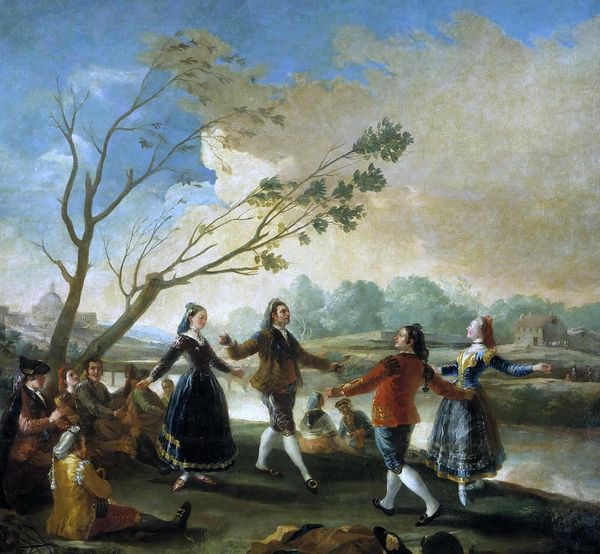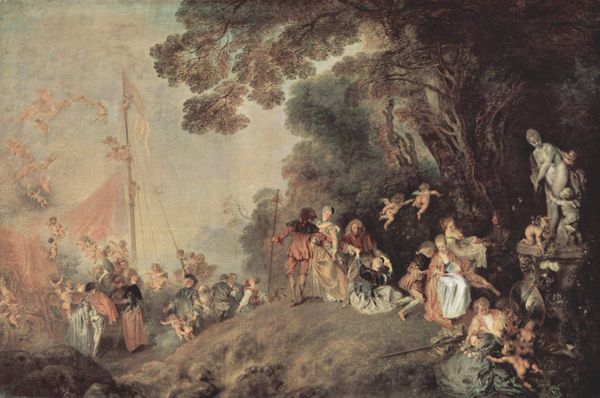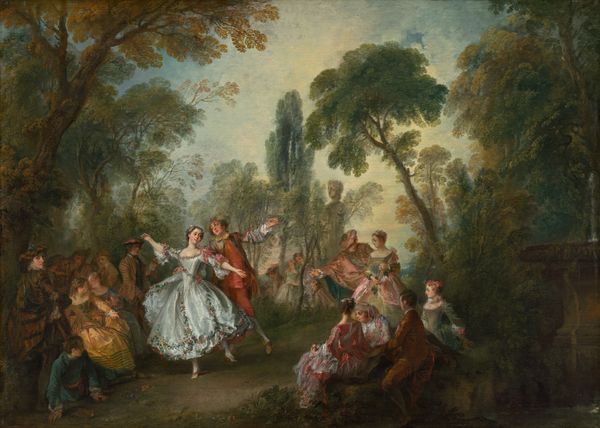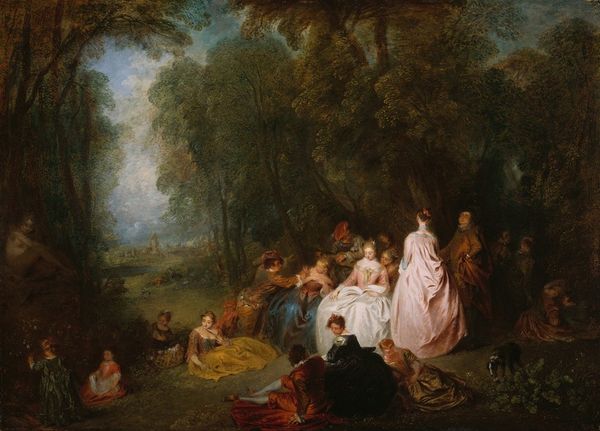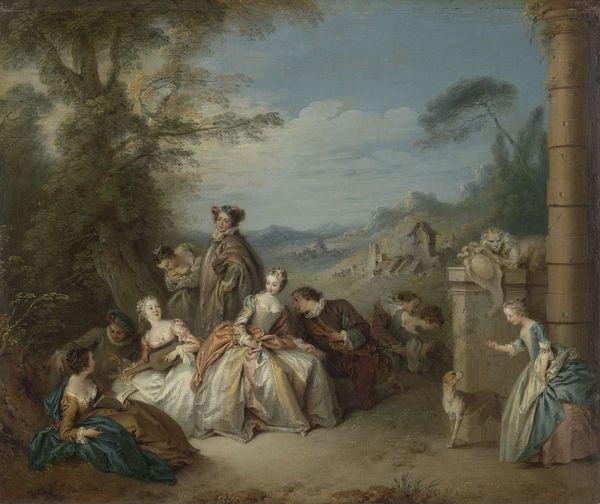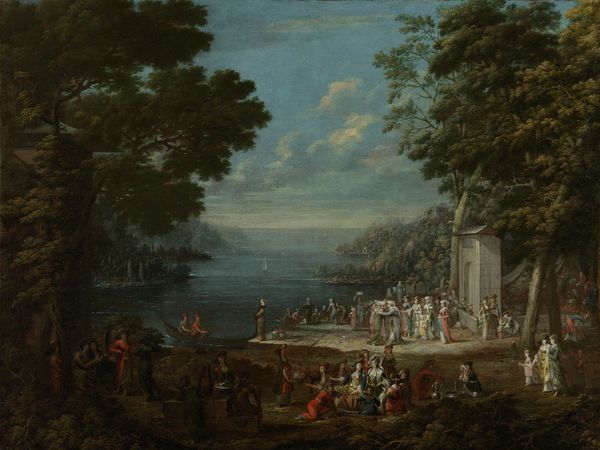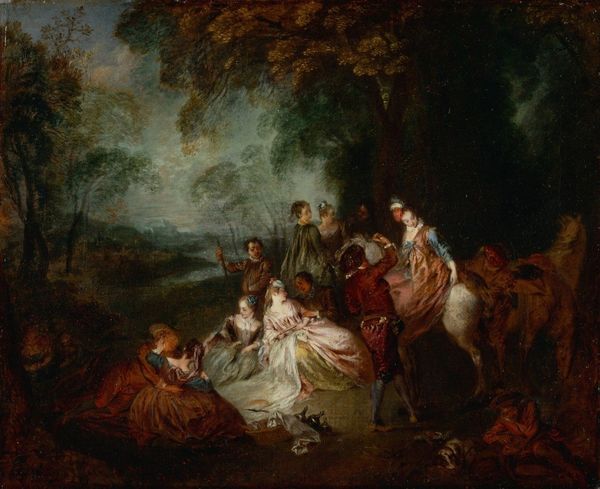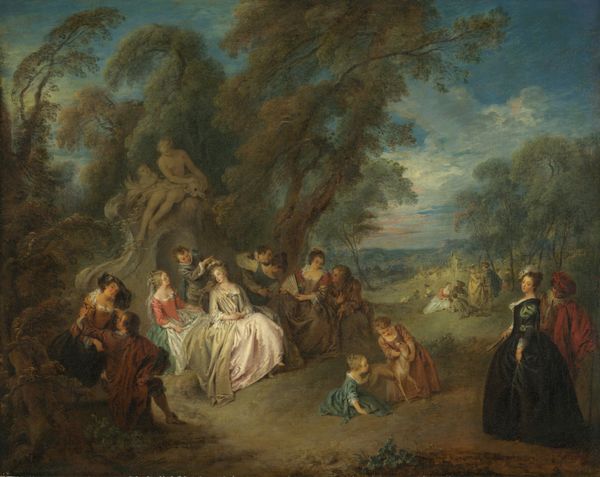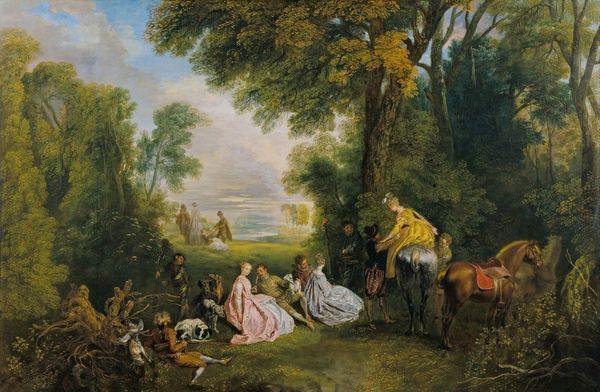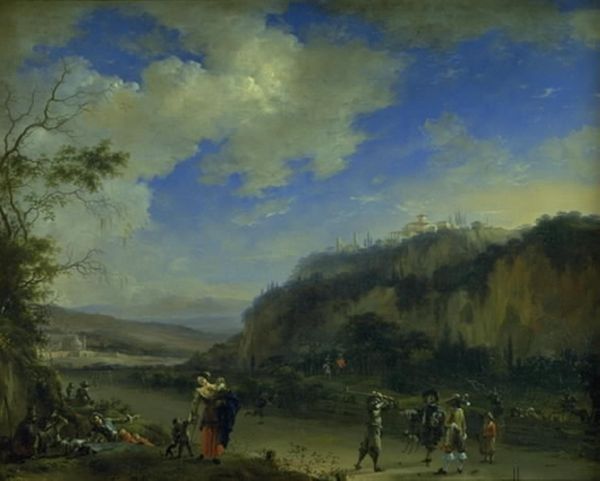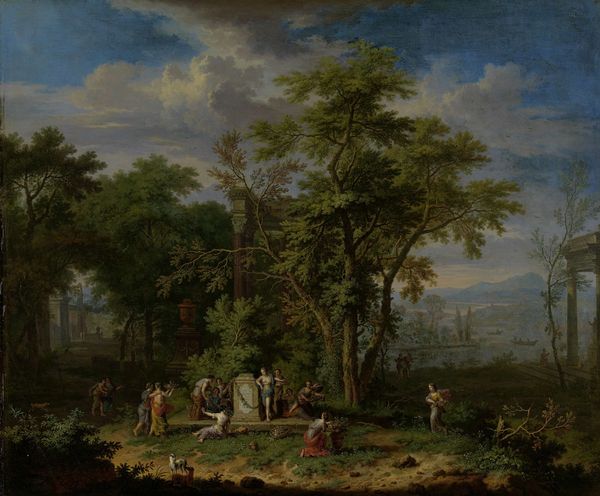
Dimensions: 45.5 x 56 cm
Copyright: Public Domain
Curator: Standing before us is Jean-Antoine Watteau’s “The Embarkation for Cythera,” painted around 1709-1710. It is currently housed right here at the Städel Museum. Editor: It’s ethereal, almost dreamlike. The soft colors and feathery brushstrokes give it an otherworldly quality. It’s lighter than I thought it would be. Curator: Indeed. Watteau masterfully used oil paints to create this fete galante. If you look closely, you will see that it represents a procession of lovers preparing to depart for Cythera, the mythical island of Venus, goddess of love. But consider for a moment, the production of pigments during this period; the rarity of certain blues or the labour required to grind them influenced the color palette and therefore, the overall mood of rococo paintings. Editor: And those figures! Look how meticulously dressed they are. There's an unmistakable aristocratic elegance, a yearning for an idealized past reflected in their finery. What can this detail suggest about the social structure that was being reflected through such luxurious and whimsical settings, Watteau seemingly capturing the frivolous nature of the era's elite class? Curator: A pointed question indeed! Watteau found patrons within that social class, and as such, he created imagery that catered to the sensibilities of wealthy buyers who shaped what art got produced and preserved. These paintings provided an aesthetic escape and a narrative of love and leisure—things the upper class wanted to see reflected. Editor: It also seems relevant that while mythology plays a key role, it’s not about grand battles or heroic deeds, but romance! It presents the themes in a palatable manner for a specific demographic. Were similar works displayed within the elite circles in a way that affirmed social identities? Curator: Undoubtedly. Such works often decorated private salons, fostering conversation and cultivating an exclusive taste among those with the means to possess such artistic status symbols. Also think about the institutional validation of these scenes. Salons would play host to artistic rivalries and signal to the public what artwork commanded artistic merit and market demand. Editor: Looking at it all together—the idyllic setting, the allegorical subject, the physical elements and the societal impact. "The Embarkation for Cythera," provides insight into the era, revealing just as much through the art that came into creation as what got deliberately left out of the frame. Curator: I concur. Considering Watteau’s process along with the social history intertwined in the image creates a fuller narrative than what any single lens could accomplish.
Comments
Join the conversation
Join millions of artists and users on Artera today and experience the ultimate creative platform.
